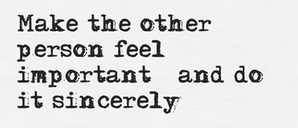There’s little controversy over the value of emotional intelligence (EI). Yet most efforts still focus on arguing its importance without much, if any, organizational scaffolding in place to support its pursuit.
This article gets right to what you can do, right now. These are everyday opportunities anyone can take to support and develop EI for individual and organizational growth.
But first… a refresher
Emotional intelligence entered management vernacular in 1990 with an article by psychologists John Mayer and Peter Salovey, then catapulted to buzzword status with Daniel Goleman’s book in 1995.
We’re still talking about it because it’s challenging to measure and achieve, and more important than ever.
EQ (emotional quotient) is equally (perhaps more) important than IQ (intelligence quotient) when it comes to performance and leadership. Technical aptitude is the basic job requirement; understanding and managing emotions in oneself and others is the key to next-level accomplishment. The World Economic Forum predicts EI will be a top ten job skill by 2020.
“Those that want to stay relevant in their professions will need to focus on skills and capabilities that artificial intelligence has trouble replicating — understanding, motivating, and interacting with human beings.” – Barry Libert, CEO, OpenMatters
Bonusly previously explained the key advantages for EQ: self-awareness, self-regulation, internal motivation, empathy, and social skills. It makes for a more present, engaged, collaborative, and innovative workforce. If you’re still not convinced emotions are important in the workplace, there’s also an article for that.
And now… better strategies
Whether an intern or CEO, everyone in their everyday work can improve their emotional intelligence to better manage, influence, and relate to others. And they play important roles in developing EI in others beyond the standard training session.
We identified some emotional intelligence training opportunities you’re likely to find hiding in your everyday life at work. Although many of these strategies could be uesful for any job function, we organized them into categories to make it quick and easy to find the strategies you’re looking for:
Individual Contributors

1. See emotions as data. Feelings are based on automatic thoughts that can be unrealistic. Just because you think or feel something, doesn’t make it true. Observe emotions as data to assess in logical combination with other information.
2. Collect feedback. Review past feedback like performance reviews and complimentary or critical emails. Ask people around you how they perceived your behavior in typical and difficult situations. Ask them how you treated them when they were highly emotional.
If available, request 360-degree feedback and analyze the gaps between self-ratings and other’s ratings. Consider strengths, weaknesses, and blind spots.
3. Be mindful. Practicing meditation, deep breathing, or just focusing on a meal without distraction can strengthen the ability to direct your own attention and observe your own emotions from a more peaceful state.
4. Try body scans. In difficult or important moments, take a few minutes to sense physical cues about your emotional state. Your tense shoulders may reveal you’re more anxious than you realized. If a few minutes isn’t possible, pause for at least one or two breaths to think before responding.
5. Choose words carefully. Practice describing emotions more accurately, i.e. “I feel resentful” instead of “I feel bad.” In the beginning, it may help to reference a list of feeling words until the language comes more naturally. This can provide clues to potential causes and solutions.
6. Notice stories. People react differently because they experience differently. Their biology, personality, and past have shaped the stories they tell themselves. Remember this applies to you too.
7. Show respect. Find something you like in another person and tell them. Use body language (mirroring, nodding) and paraphrasing to show others they are heard. Validate their point of view. Active listening and positive interactions foster kindness, trust, and openness.
8. Establish habits. Focus on one meaningful and achievable change at a time. You might start by talking with a colleague you trust about a low intensity feeling like mild irritation. Or verbalize your emotions to a camera in order to see if you’re communicating the way you intend.
Leading the team
![]()
9. Ask genuine questions. “How are you?” won’t get an honest answer from most Americans. Ask directly if they have concerns, for example, and ask it sincerely.
10. Get to the why. Discuss in a group how people feel differently and explore why. This practice will help your team work better with each other, customers, and other stakeholders.
11. Try job shadowing. If someone is having a particularly hard time empathizing, you may organize job shadowing to help see a different perspective firsthand.
12. Demonstrate compassion. Show your team how to value people and make the best decisions for the most good. Guide them away from identifying too much with the people who are most similar to them because that leads to bias and suffering alongside them instead of helping them.
13. Use the pre-mortem technique. Before a project begins, get team members write down all the reasons why it might fail. This helps people think critically and consider alternatives with less emotional resistance.
14. Normalize cool downs. For any emotional situation, insist each time your team takes at least 20 minutes before they react. That’s how long it takes before people can think clearly following a fight or flight response.
Giving them a few days for bigger decisions allows them to contemplate it from different emotional states.
15. Institute slow downs. Where appropriate, establish structured processes to help your team cool down and think through decisions. Try a weighted matrix.
16. Cultivate desire to change. Emotional intelligence is too complex to motivate with external incentives or punishments. Richard Boyatzis’ Intentional Change theory outlines a more effective coaching approach:
Help discover personal values and compelling vision:
- What is important in their life?
- What is important to them at work?
- What is their dream for the future?
Help connect current behavior with the future:
- How do others experience their interactions?
- How do you observe their emotional intelligence?
- How can they develop skills to realize their vision?
- How can people support them in this process?
17. Establish baselines. As with any change, you want to know where you’re starting and where you’re going to determine how to get there. EI assessments include the ESCI, MSCEIT, or the Emotional Intelligence 2.0 appraisal.
18. Target key competencies. Invest in developing competencies where the person is weakest and where strength would best benefit them and the organization. More Than Sound’s model has 12 competencies, including adaptability, achievement orientation, positive outlook, organizational awareness, influence, conflict management, and inspirational leadership.
19. Offer growth opportunities. Many employees benefit from special projects, committees, or other stretch opportunities. They not only practice their skills with different people in different ways, but they learn from people they wouldn’t normally be exposed to in their regular roles.
20. Adapt to each individual. Some people and some positions don’t require as much emotional intelligence. Employees with autism can be extremely skilled at spotting patterns, but not social cues. They can be partnered with people who have exceptional emotional intelligence to help accommodate them and help their ideas and their work be understood and supported.
21. Give good feedback. Help employees understand emotional intelligence, its importance, and their levels of competencies. As with all feedback, focus on objective data and clear expectations. Give positive recognition weekly so they are confident and comfortable to receive more critical feedback in a constructive way.
22. Mentor, coach, buddy. Set up a network of specific people who can provide guidance, support, and advocacy within or beyond the organization. Coaches provide powerful support through the inevitable struggles of change and self-improvement.
Leading the organization

23. Meet basic needs first. People need to know they have adequate resources and stability before they devote energy to social belonging and self-fulfillment.
Employees want autonomy and meaning, but not at the expense of their minimum standard for compensation and benefits.
24. Master vision and values. Leaders should embody the organization’s core values. If employees see misalignment, it feels like a broken promise. Use stories in combination with numbers to bring vision to life and inspire its achievement.
25. Get vulnerable. Levels of professional intimacy and emotional display rules vary by culture, but people are generally more likely to acknowledge and address their vulnerabilities when they see leaders role model and value the practice.
26. Show some emotion. The message should not be to avoid emotion or maintain constant happiness. A moderate level of emotion helps people make better social and financial decisions when combined with data and logic.
27. Plant prompts. When employees are engrossed in their work, it’s harder to remember what they learned in training or what their CEO said at the last townhall. Posters, desktop objects, or computer wallpaper/notifications are ways to trigger new habits like deep breathing and body scans when they matter most.
28. Embed recognition. When employee recognition is a part of your culture, people become more aware of how they affect others and how to express their appreciation to one another. Simply stopping to think regularly about what you’d like to recognize people for can help think before acting.
29. Incentivize with feeling. Recognizing teams and offering group incentives help people feel valued and connected to the company in a way that improves well-being, productivity, and loyalty.
30. Invest in wellness. Physical and mental health programs and policies complement emotional awareness and regulation. Fitness subsidies, free confidential counseling, and social events can help manage emotional distress at work and at home.
In summary
Everyone can and should play a role in building emotional intelligence in themselves and others. The process starts with self-awareness, but the symbiotic relationships never end. Anyone can immediately apply one of these thirty strategies to improve at the personal, professional, and organizational levels.
If you’re ready to take the next step toward building an extraordinary organizational culture, check out our latest guide:
Business & Finance Articles on Business 2 Community
(94)
Report Post





